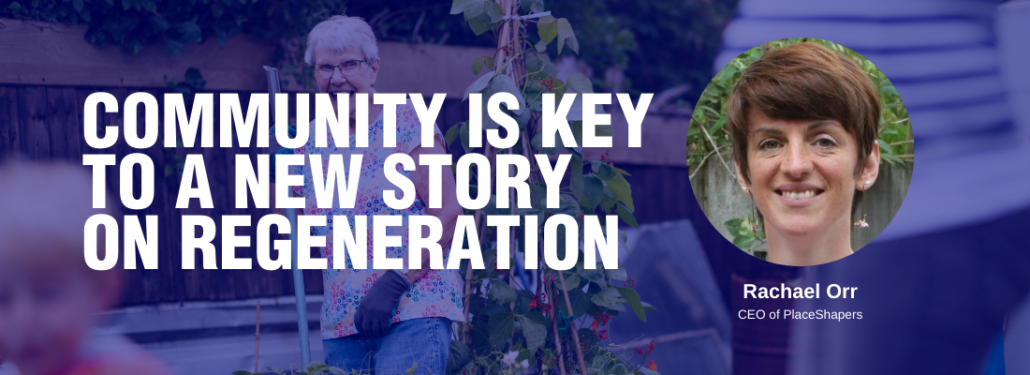Community is key to a new story on regeneration
Guest blog by Rachael Orr, CEO of PlaceShapers
Whenever I spend time with a PlaceShaper member CEO I always ask, “what’s the one thing PlaceShapers could try and do to make your job easier?” One of the most interesting, and challenging answers I’ve ever had was three years ago, from a London based CEO: “you could stop ‘regeneration’ being a dirty word.”
It’s a good job I never promise I can deliver on that one thing. But I do think the policy environment in the last year is charting the path to helping him with this challenge.
If we are to win the argument that regeneration is central to levelling up, to restoring so many so called ‘left behind’ places, indeed to de-toxifying the term, then central to our case are the stories of great people, much loved places and prioritising often overlooked social infrastructure as highly as we do physical infrastructure.
I was fortunate to serve as a Commissioner this year on the Commission on Prosperity and Community Placemaking. Its final report, No Place Left Behind, made a number of recommendations about how we can better trust communities to lead change in the places they love – for example a mass transfer of ownership of empty shops, buildings and public spaces to communities and local businesses, through a new Community Right to Buy.
But what also stood out for me was the role of housing associations in supporting these community organisations to deliver their work, and to scale their reach and ambition. In so many places the catalyst for growth, the organisation willing to take on some of the risk, was a place based social landlord. They build homes yes, but their role in supporting social infrastructure, from libraries to youth clubs, may be just as pivotal in making the case for regeneration that works.
Place-based social landlords are experts on the place they work. Their staff and residents are the local communities. They know what they need to make places better, from mixed tenure housing to new parks and community centres.
So as civil servants continue to ponder if there is a positive future for regeneration policy, I think they need to do three things.
Firstly, they need to ensure any regeneration scheme starts with local communities and anchor organisations with a seat at the table when decisions are made, not just when the consultation phase on already agreed plans begins.
Secondly, they need to prioritise investment in social infrastructure far more highly – in line with what communities say they need.
And finally, we need a new role for Homes England, who should be empowered to employ more staff and make more decisions at a regional level, reviewing their remit to focus on regeneration and long term placemaking and allocating long term funding to allow housing associations and others to drive regeneration and renewal in homes and neighbourhoods.
In communities across the country, we have the experts on regeneration, and they are showing and telling a new possible story. Now we need to trust them, support them and deliver what they know they need.




